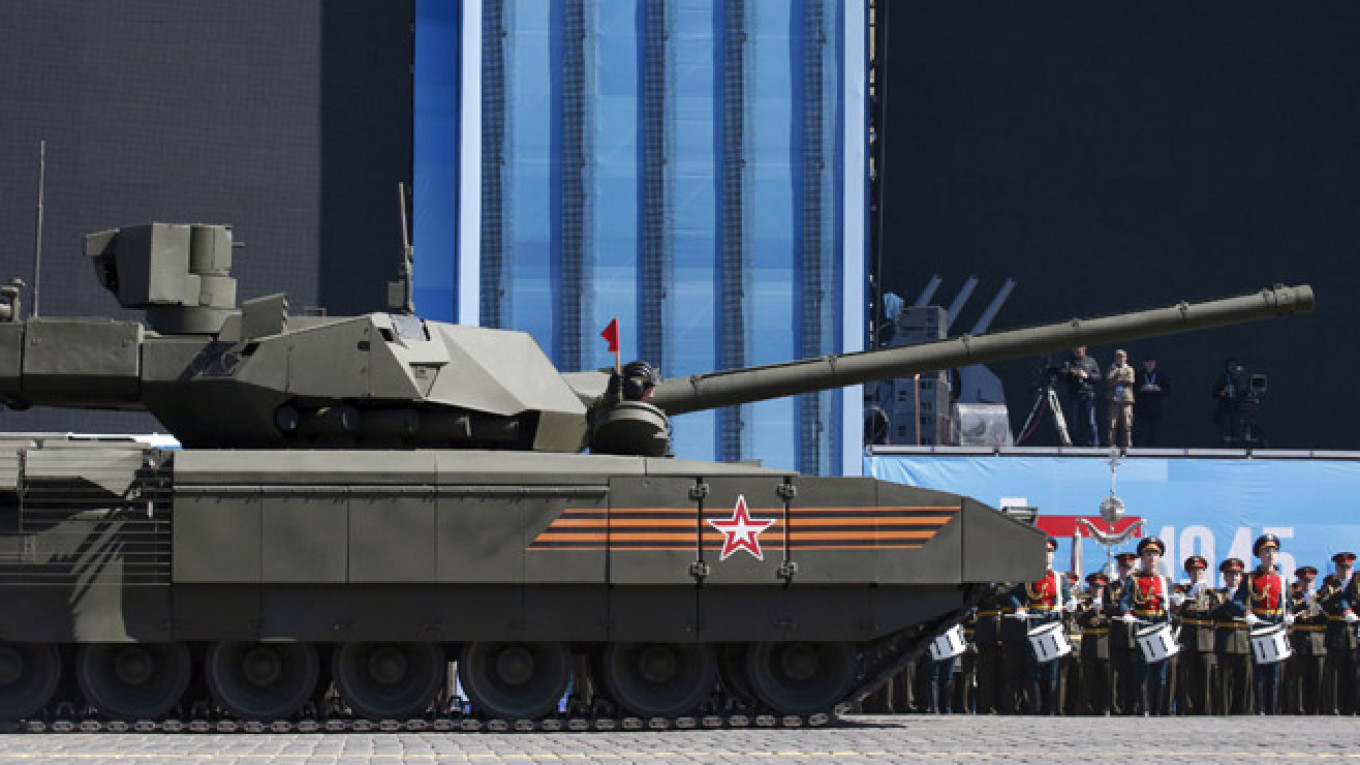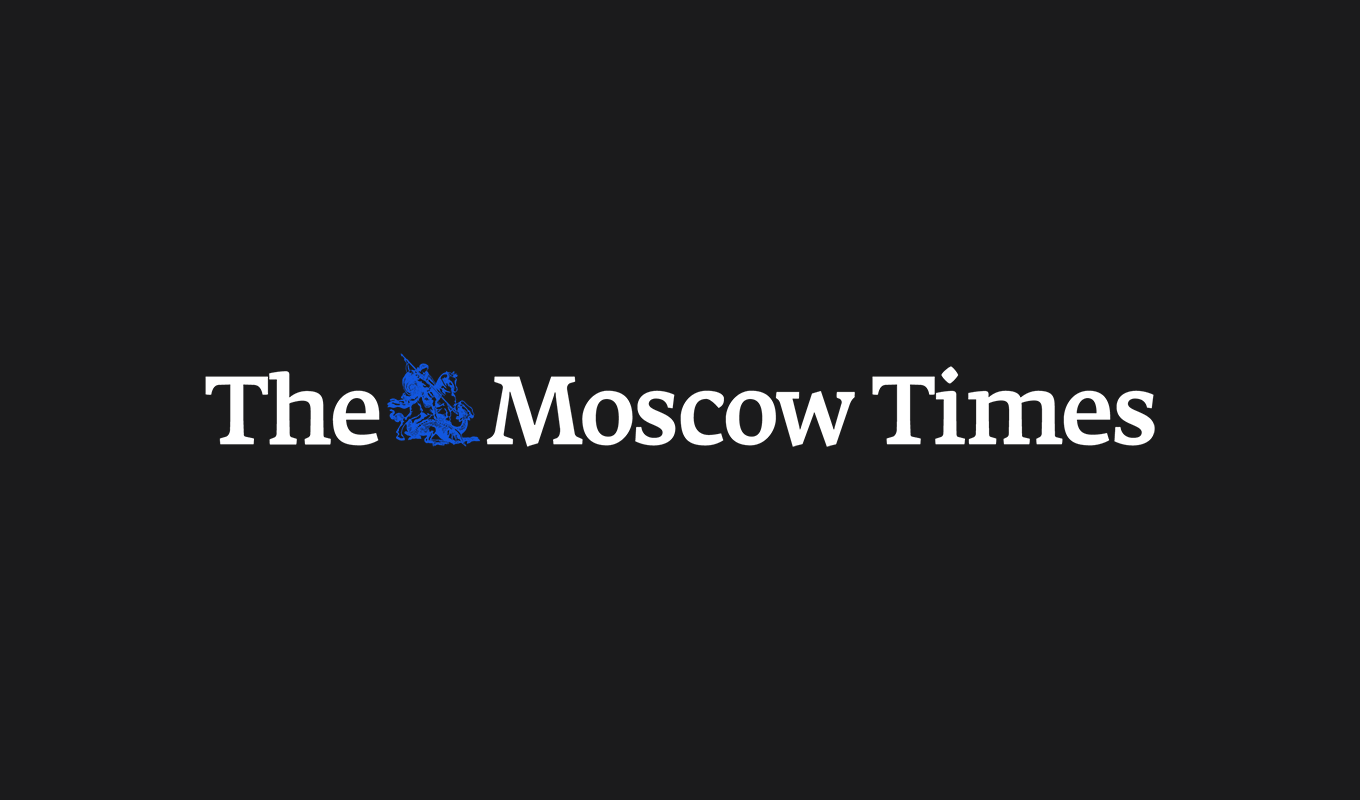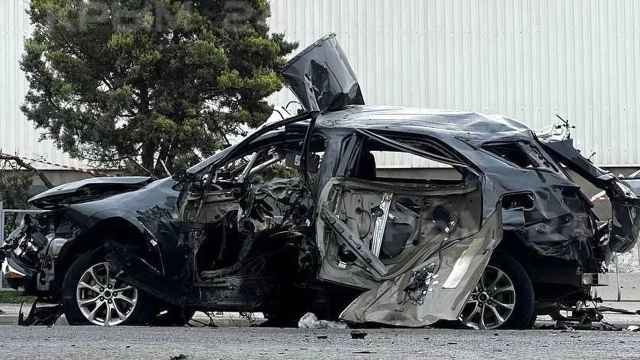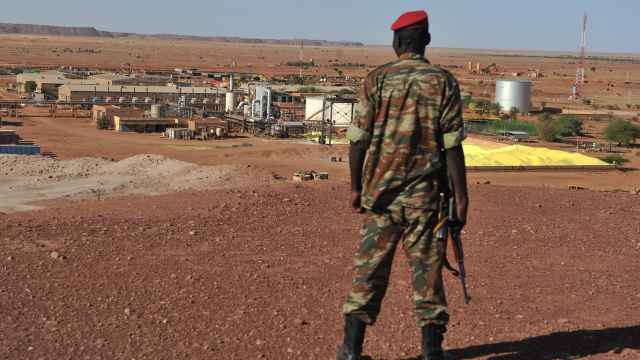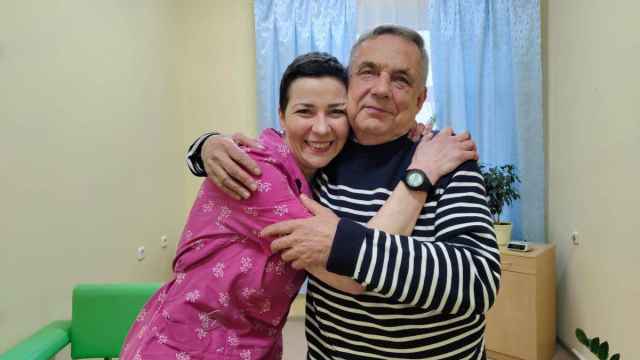Rolling through Red Square to the tune of patriotic war hymns, Russia's new battle tank, the Armata T-14, will surely steal the show on Saturday during Moscow's blowout celebration of the 70th anniversary of the Soviet Union's victory over Nazi Germany in World War II.
But despite the pomp and circumstance of its unveiling, experts said that the massive new tank, hailed by Russia's media as one of the best combat vehicles in the world, is hardly a revolution in warfare.
The Armata may be more effective and safer than Russia's Soviet-era tanks, but in its current version it is hardly a vast leap ahead in tank design, according to Ruslan Pukhov, director of the Moscow-based Center for the Analysis of Strategies and Technologies, a defense think tank.
"The Armata is certainly not a game changer," said Ben Moores, a senior analyst at international defense consultancy IHS. Rather, the new tank is "just a more modern and effective vehicle than previous Russian tanks," he said in e-mailed comments.
Same Shells, New Tank
When the tank enters serial production, slated to start as early as next year, Armata will come standard with a 125 mm cannon capable of firing several types of shells and even anti-tank guided missiles — but these munitions are already fielded by older and cheaper Russian tanks like the T-72.
Though the cannon is a new design, "Armata will be using ammunition manufactured for the T-72," said Pukhov.
This will leave Armata firing shells with shorter range and lower impact velocity than Western analogues, according to Pukhov.
The tank, will, however, be a vast improvement on Soviet designs. As Moores explained, "the key to tanks is their mission system fit (targeting, command and control, and protection)." And in these respects, Armata represents a substantial improvement over older tanks.
The Armata is highly automated compared to its Soviet predecessors, featuring an advanced targeting system that makes it faster and more accurate than older tanks.
It also represents a new approach to vehicle construction more in line with Western tank design's focus on armor, offering its crews better survival prospects than any other Russian tank ever fielded. Beneath its armored shell, the crew is sheltered in an isolated capsule forward of the tank's turret, which is controlled remotely.
Game Changer?
But while the tank may not be a game-changer, it may represent a shift in Russian thinking in the field of tank design — or perhaps just the result of industrial lobbyism and the manufacturer's unwavering loyalty to the Kremlin.
While the tank will certainly boost Russia's military strength if deployed in great numbers, Russia has little immediate need for the tank.
A force of the older T-90s, the mainstay of Russia's tank corps, would be sufficient for Russia to throw its weight around the near-abroad. Rebels backed by Russia in eastern Ukraine have given Kiev a run for its money with far less.
Instead, other factors such as a higher regard for crew safety in post-Soviet Russia, and greater exposure to Western design philosophies, contributed to the design of a new tank, Pukhov said.
"Obviously, the tank absorbed the best of what has been invented [abroad] over the last 30 years," he said.
There may have also been an element of lobbyism to designing and developing a new tank. Plant workers at Armata's manufacturer, UralVagonZavod, have been strident supporters of President Vladimir Putin since at least 2011, when they pledged to drive tanks almost 2,000 kilometers from their factory in the Urals to Moscow to crush large opposition protests.
Less than a year later, Putin personally offered the deputy head of UralVagonZavod's tank production department a position as his personal envoy to the Urals region. This was followed in 2013 by the Defense Ministry's first order for Armata tanks.
The loyalty appears to have paid off. As part of the state's massive 20 trillion ruble ($400 billion) rearmament campaign through 2020, the military hopes to procure up to 2,300 of the Armata tanks. The unit cost of a T-14 is not yet known publicly.
Contact the author at m.bodner@imedia.ru
A Message from The Moscow Times:
Dear readers,
We are facing unprecedented challenges. Russia's Prosecutor General's Office has designated The Moscow Times as an "undesirable" organization, criminalizing our work and putting our staff at risk of prosecution. This follows our earlier unjust labeling as a "foreign agent."
These actions are direct attempts to silence independent journalism in Russia. The authorities claim our work "discredits the decisions of the Russian leadership." We see things differently: we strive to provide accurate, unbiased reporting on Russia.
We, the journalists of The Moscow Times, refuse to be silenced. But to continue our work, we need your help.
Your support, no matter how small, makes a world of difference. If you can, please support us monthly starting from just $2. It's quick to set up, and every contribution makes a significant impact.
By supporting The Moscow Times, you're defending open, independent journalism in the face of repression. Thank you for standing with us.
Remind me later.


